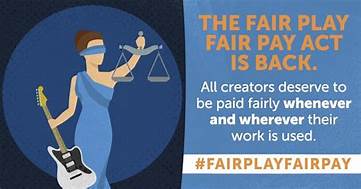Legislation will also lead to inequalities among athletes
Athletics has been in my blood since I was eight years old, when I started competitive swimming. My love of sports only grew as I discovered basketball, softball, lacrosse, and more recently, ice hockey. When my glory days ended (a decision made when I realized I was twice as old as the other women playing in the recreational lacrosse league), I decided to swap the stick for a whistle. I have been an active member of collegiate sports, including student-athlete, coach, National Collegiate Athletic Association (NCAA) faculty athletic representative, and professor of collegiate athletes. For these reasons, the breaking news from California of the passage of the Fair Pay to Play Act earlier this fall hits close to home. This legislation, which will go into effect in 2023, will allow student-athletes to receive financial compensation for their participation above and beyond money received for cost-of-attendance scholarships. They would be able to hire agents and receive endorsements for their name, image, and likeness (NIL).
This isn’t the first time that the question of whether student-athletes can receive compensation for NIL has arisen. The amount of money being made by the NCAA (and others) off of the work of student-athletes has piqued the interest of many. US Senator Christopher Murphy (D-Conn.) wrote a report, Madness Inc., last March in which he examined the millions of dollars the NCAA is making while forcing amateurism. USA Today’s Tom Schad and Steve Berkowitz have taken a closer look at the salaries of some college coaches who “make severely more money than the governor of the state in which they coach” and cited Clemson University head football coach Dabo Swinney’s $9.32 million compensation in 2019 compared to the $120,000 salary for South Carolina’s governor. Granted, the Clemson coach’s salary represents the top tier of NCAA football coaches’ salaries, but when compared to how much a collegiate athlete may make (tuition, room and board, and $5,000 for educational expenses), it highlights a glaring problem in collegiate sports.
To address the financial inequities, previous court cases, including O’Bannon v. NCAA and the National Collegiate Athletic Association Athletic Grant-in-Aid Cap Antitrust Litigation, have focused on whether the NCAA has violated antitrust laws by not allowing student-athletes to make money from their NIL. The question of compensation for student-athletes for their NIL has even risen to the federal level, as seen in the Student Athlete Equity Act proposed by US Representatives Mark Walker (R-N.C.) and Cedric Richmond (D-La.), introduced this past March.
Okay. So I get it. A lot of money is made in college sports…well, to clarify…select college sports, such as football and basketball, and the athletes aren’t receiving many of the profits. But how does this even greater focus on financial gain align with the core values that are at the foundation of collegiate sports? We must ask ourselves, what is the purpose of collegiate sports, and to do so, we must begin with the creation of the collegiate sports governing body, the NCAA.
The NCAA was originally founded in 1906 as the Intercollegiate Athletic Association in an attempt to address the underregulation of intercollegiate athletics that resulted in cheating scandals, deaths, and injuries. The NCAA is the largest amateur organization in the United States. Amateur athletes differ from professional athletes in that they are not allowed to be paid except for cost-of-attendance scholarships plus up to $5,000 of educational-related expenses. New legislation, such as the Fair Pay to Play Act, will not only add to the current problem of money in collegiate sports, but it will also help destroy the philosophy of amateurism in collegiate sports as well as lead to inequities among athletes.
By now, you might be thinking that I don’t support student-athletes. Not so. I am just suggesting that we think about an alternative solution to the problem instead of throwing more money at the problem. For example, what if we were to take one of the sports in which players could actually benefit from this legislation, such as football teams in the Football Bowl Subdivision (FBS), and remove them from the NCAA. Removal from the NCAA will preserve the original founding mission of the NCAA and the benefits of amateurism. Second, remove the word “student” from “student-athlete” and have athletes participate solely in athletics and pay them for their participation (which could also include compensation for endorsements, etc.). Once their collegiate playing days are over, they could actually focus on being a student. Last, have athletes form unions to provide a unified voice at the bargaining table.
Let’s face it. There is a small fraction of collegiate athletes that are employees of their institutions, and they should be paid as such. Let’s leave collegiate sports as amateur sports, the way they were intended to be.
“POV” is an opinion page that provides timely commentaries from students, faculty, and staff on a variety of issues: on-campus, local, state, national, or international. Anyone interested in submitting a piece, which should be about 700 words long, should contact John O’Rourke at orourkej@bu.edu. BU Today reserves the right to reject or edit submissions. The views expressed are solely those of the author and are not intended to represent the views of Boston University.
